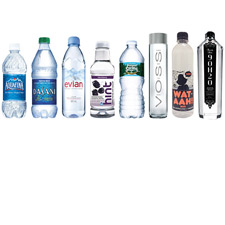Research conducted by Natural Marketing Institute (NMI), a strategic consulting and market research firm, shows that the American consumption of water has increased by more than 68 million 8-ounce servings in less than a year.

|
This groundbreaking study, among 60,000 U.S. adults, evaluated the average daily intake of plain/unflavored water (including bottled, tap and filtered water) consumed in the U.S. between the end of 2013 (Oct-Dec) and mid-2014 (Apr-June), and found consumption has increased significantly in each of the past two quarters, jumping from 4.43 to 4.72 servings. Most demographic groups showed average daily consumption increases, including Hispanics who indicated a greater point change than other races and the population as a whole.
“Health and wellness trends are here to stay – it’s a macro cultural shift toward an improved lifestyle and personal responsibility. And water consumption plays a clear role,” said Steve French, NMI Managing Partner. “Consumer behavior isn’t easy to change, but it’s great to quantify that Americans are recognizing the benefits of drinking more water.”
Additional results include:
• On average, men are drinking more water daily than women.
• Younger Americans (Millennials and Gen X) are more likely than older adults to be drinking larger quantities of water.
• Households with kids are drinking more water than households without kids.
• Lower and higher income consumers (less than $35,000 and higher than $100,000) show greater consumption increases than those with middle incomes.
• Those not employed but looking for work show a significant increase with a 0.51-point serving change.
• Boomers register the largest mean point change among generations, increasing significantly from 4.32 to 4.66 servings.
Based on NMI’s experience, the increased consumption rates are attributed to several factors: the economic influences linking consumption due cost metrics; a general consumer trend toward healthier beverages; and concerted efforts - such as the Partnership for a Healthier America’s Drink Up initiative, as well as multiple city- and state-specific tap campaigns.
